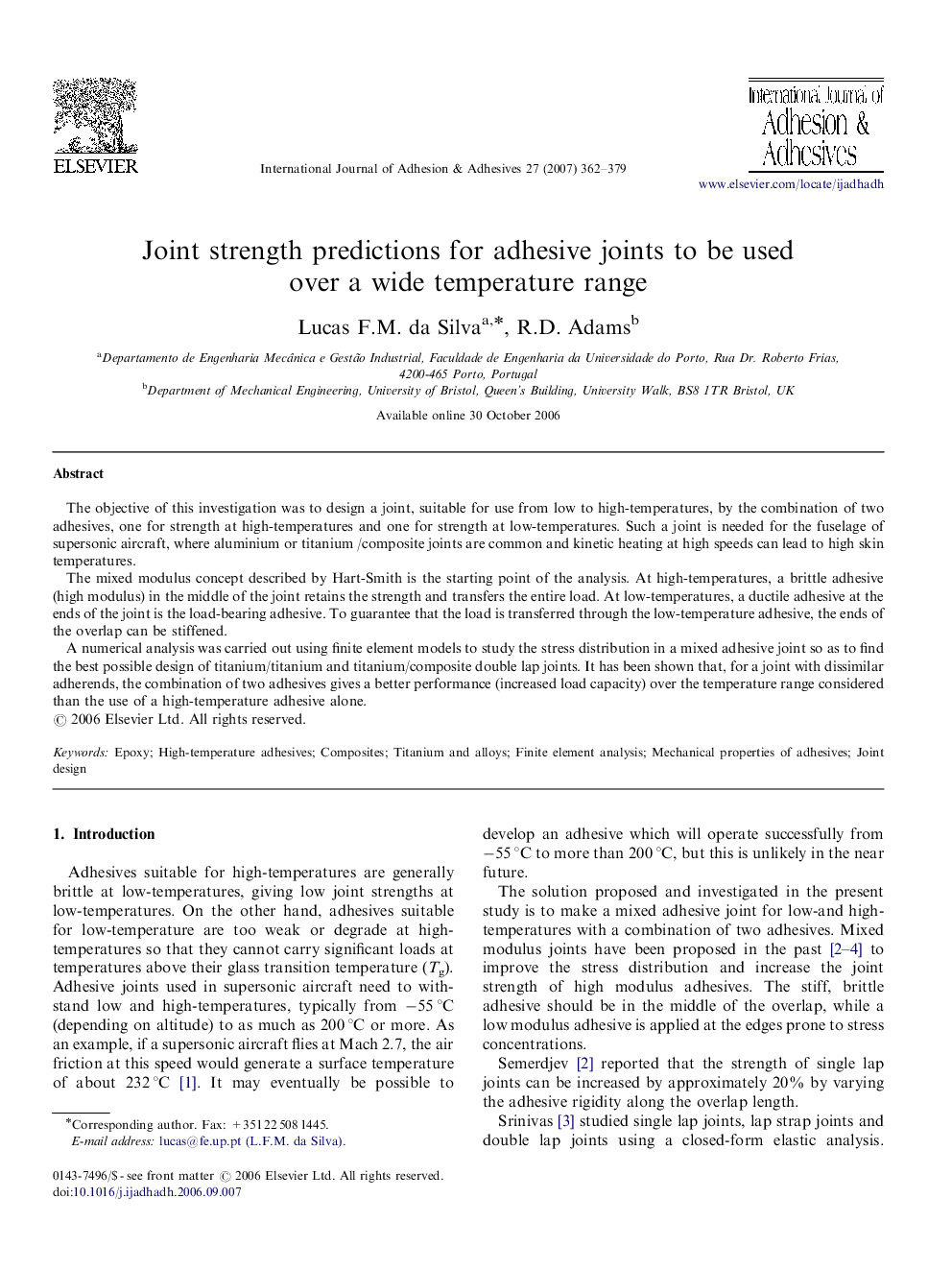| Article ID | Journal | Published Year | Pages | File Type |
|---|---|---|---|---|
| 776676 | International Journal of Adhesion and Adhesives | 2007 | 18 Pages |
The objective of this investigation was to design a joint, suitable for use from low to high-temperatures, by the combination of two adhesives, one for strength at high-temperatures and one for strength at low-temperatures. Such a joint is needed for the fuselage of supersonic aircraft, where aluminium or titanium /composite joints are common and kinetic heating at high speeds can lead to high skin temperatures.The mixed modulus concept described by Hart-Smith is the starting point of the analysis. At high-temperatures, a brittle adhesive (high modulus) in the middle of the joint retains the strength and transfers the entire load. At low-temperatures, a ductile adhesive at the ends of the joint is the load-bearing adhesive. To guarantee that the load is transferred through the low-temperature adhesive, the ends of the overlap can be stiffened.A numerical analysis was carried out using finite element models to study the stress distribution in a mixed adhesive joint so as to find the best possible design of titanium/titanium and titanium/composite double lap joints. It has been shown that, for a joint with dissimilar adherends, the combination of two adhesives gives a better performance (increased load capacity) over the temperature range considered than the use of a high-temperature adhesive alone.
